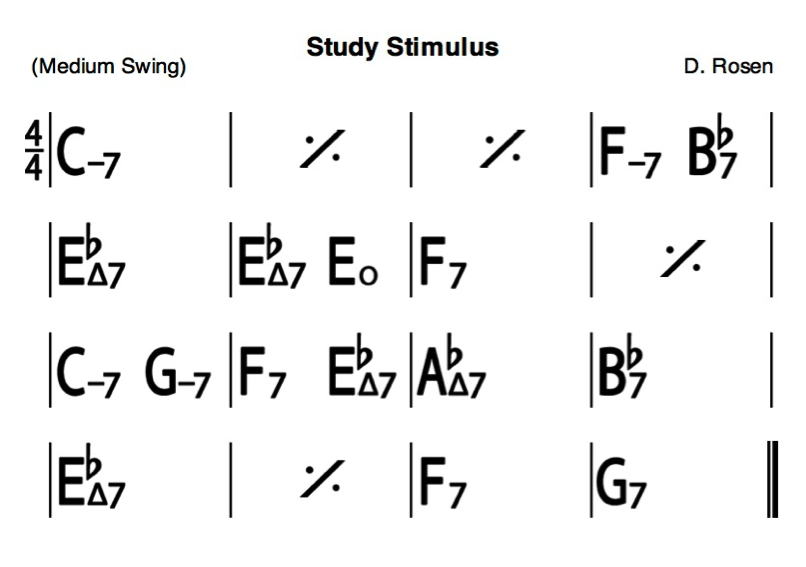Cognitive Processes Underlying Creative Music Improvisation
Overview:
Current creativity research reveals a fundamental disagreement about the nature of creative thought, specifically, whether it is primarily based on Type-1 (automatic, associative) or Type-2 (executive, controlled) cognitive processes. We proposed that Type-1 and Type-2 processes make differential contributions to creative production depending on domain expertise and situational factors such as task instructions. We tested this hypothesis on jazz pianists who were instructed to improvise to a novel chord sequence and rhythm accompaniment. Afterwards, they were asked to perform again under instructions to be especially creative which, via goal activation, is thought to prompt the musicians to engage Type-2 processes. Jazz experts rated all performances. Overall, performances by more experienced pianists were rated as superior. Moreover, creativity instructions resulted in higher ratings. However, creativity instructions benefited less-experienced pianists more than it did for more experienced pianists, suggesting differential contributions by Type-1 and Type-2 processing depending on situational factors and individual differences.
Methods:
Jazz lead sheet used for this study.
Jazz pianists with varying levels of expertise were asked to improvise over a series of chord changes with explicit 'be creative' instructions and with no instructions. Jazz experts rated each improvisation for creativity, aesthetic appeal, and technical proficiency. Multilevel regression (MLR) was implemented to determine the model which best fit the data.
Best MLR Model:
Jazz Ratings ~ Expertise + Instructions + Expertise x Instructions + (Instructions | Subject)
Results
As predicted, the musicians with the most professional experience received the highest improvisation ratings, consistent with past jazz improvisation studies. However, there was an interaction between expertise and instructions to be creative. The overall improvement associated with the instruction was predominantly due to the less-experienced musicians. When asked to improvise more creatively, the more experienced pianists did not show comparable improvement.
Improvisation quality ratings as a function of Instructions x Expertise. This model-based estimation displays musicians with less performance experience (left side of the x-axis) received higher ratings with explicit “be creative” instructions than standard instructions. For the most experienced musicians, this effect flattens and begins to reverse, though non-significantly. The error bars are 95% confidence intervals.
According to our model, creativity instructions benefited the less experienced musicians more than the experts because the Type-2 processes they instigated were no more effective, and may have been somewhat inferior to, the highly ingrained Type-1 processes that experts typically rely on. The instruction likely assisted the less-experienced musicians by prompting them to direct more attention to higher-level strategies that would empower them to avoid the pitfalls of cognitive fixation and entrenchment.



